Planning a trip to Vietnam? Let SIXT.VN be your guide! Which Country Depends Most On Tourism? The Maldives tops the list, with tourism contributing a whopping 68% to its GDP in 2022. Discover how other nations thrive on travel and how SIXT.VN can make your Vietnamese adventure unforgettable, from cultural tourism to affordable tourism options and personalized travel experiences.
1. Understanding Tourism Dependence: An Overview
Which country depends most on tourism? A country’s dependence on tourism is measured by the ratio of revenue from foreign visitors to its Gross Domestic Product (GDP). The higher the percentage, the more reliant the nation is on the tourism sector for economic stability. This metric highlights the vital role tourism plays in these economies, influencing employment rates, infrastructure development, and overall prosperity. According to the World Tourism Organization (UNWTO), tourism contributed significantly to the global economy in 2022, showcasing its importance as a driver of economic growth and development.
1.1. Why Some Countries Rely Heavily on Tourism
Several factors contribute to a country’s heavy reliance on tourism.
- Small Economies: Nations with smaller economies often find that tourism provides a significant boost, filling gaps that other sectors can’t.
- Climate and Natural Resources: Ideal climates and beautiful natural landscapes, such as beaches and forests, draw tourists and support tourism-dependent economies.
- Island Nations: Island nations, in particular, frequently depend on tourism because of their limited economic possibilities and the allure of their beaches.
- Lack of Diversified Industries: Countries lacking a variety of industries often turn to tourism as a primary source of income.
- Political Stability and Safety: Safe and politically stable destinations are more likely to attract tourists, further solidifying the importance of tourism in these areas.
1.2. The Benefits and Risks of Tourism Dependence
Relying on tourism has its perks and pitfalls.
Benefits:
- Job Creation: Tourism generates numerous jobs, from hospitality to transportation.
- Economic Growth: Foreign exchange earnings boost national income and GDP.
- Infrastructure Development: Tourism drives investment in airports, roads, and other essential infrastructure.
- Cultural Exchange: Interactions between tourists and locals promote cultural understanding and appreciation.
- Preservation of Natural Resources: Tourism can incentivize the protection of natural attractions.
Risks:
- Economic Vulnerability: Over-reliance on tourism makes countries vulnerable to economic downturns and global crises, such as pandemics.
- Environmental Impact: Mass tourism can lead to pollution, deforestation, and damage to natural habitats.
- Socio-Cultural Disruption: Tourism can alter local customs, values, and social structures.
- Seasonality: Many destinations experience seasonal tourism, leading to economic instability during off-peak periods.
- Leakage: A significant portion of tourism revenue may leave the country through foreign-owned businesses and imported goods.
2. Top 10 Countries Most Reliant on Tourism
Which country depends most on tourism? Let’s explore the top 10 countries where tourism is a cornerstone of their economies, highlighting their unique attractions and challenges.
2.1. Maldives: A Paradise Built on Tourism
Population: 515,000
GDP: $6.2 billion
Area: 300 km²
The Maldives tops the list as the country that depends most on tourism. In 2022, tourism contributed an impressive 68% to the Maldives’ GDP. With 1.7 million visitors spending $4.2 billion, the average spend per visitor was around $2,500. This island nation in the Indian Ocean boasts 1,190 small islands, with 220 inhabited. Known for its luxurious resorts, pristine beaches, and year-round temperatures between 25 and 35 degrees Celsius, the Maldives is a premier destination for high-end travelers. According to the Ministry of Tourism, Maldives, the country is continuously working to enhance its tourism infrastructure to maintain its top position.
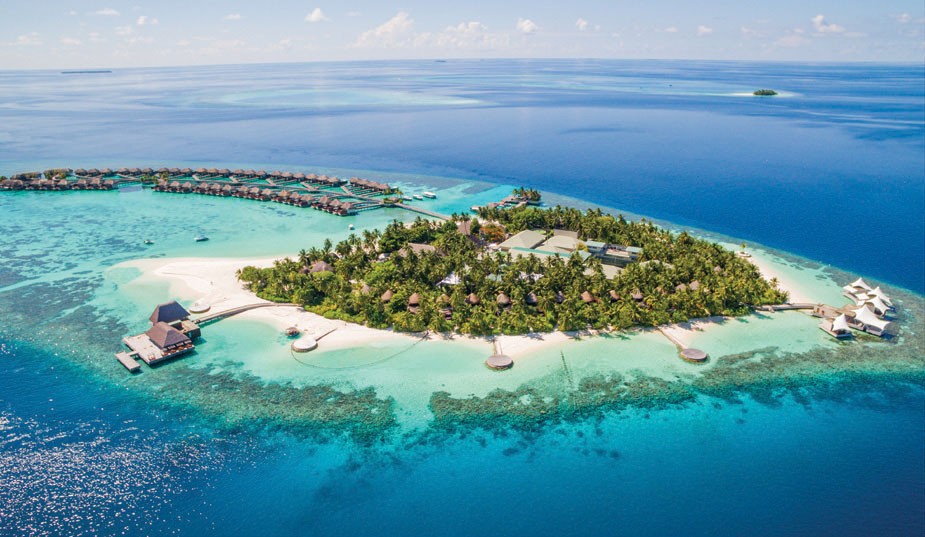 Maldives Beach Paradise
Maldives Beach Paradise
Alt text: A serene view of a Maldivian beach with crystal-clear turquoise water, white sand, and luxurious overwater bungalows, illustrating the Maldives’ heavy reliance on beach tourism for its economy.
2.2. Antigua and Barbuda: Caribbean Charm
Population: 101,000
GDP: $1.7 billion
Area: 440 km²
Tourism contributes 55% to the GDP of Antigua and Barbuda. In 2022, this Caribbean island nation welcomed 265,000 visitors who spent $921 million, averaging $3,500 per visitor. With a per capita income of $31,000 (PPP), the country offers both mid-priced and luxury vacation options. The tourist season lasts six to seven months, with much of the territory covered by a national park, making it an attractive destination for nature lovers and beachgoers.
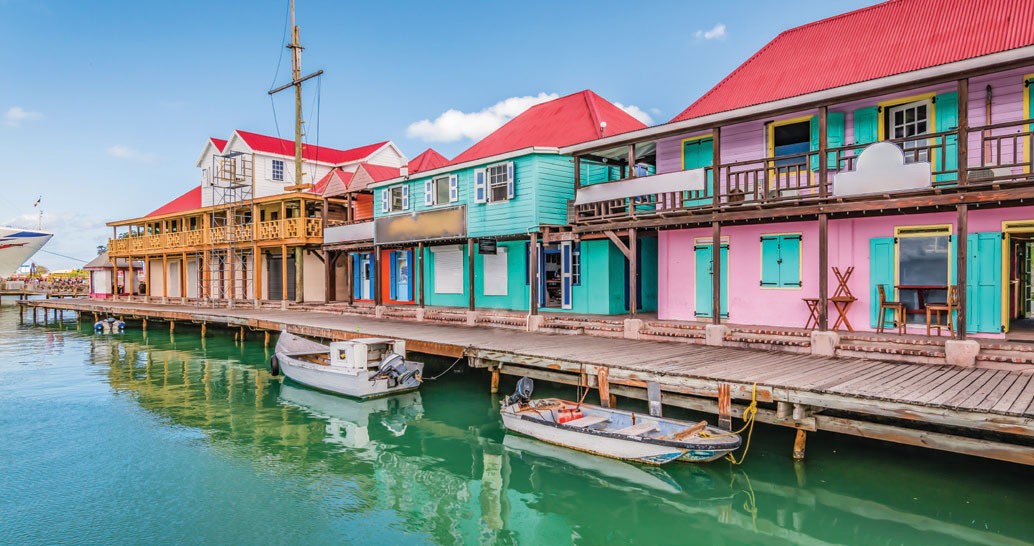 Antigua and Barbuda Beach
Antigua and Barbuda Beach
Alt text: A picturesque beach scene in Antigua and Barbuda, showcasing calm, turquoise waters and lush green vegetation, highlighting the island’s appeal for tourists seeking tropical getaways.
2.3. Seychelles: A Tropical Haven
Population: 100,000
GDP: $1.9 billion
Area: 457 km²
The Seychelles sees 23.1% of its GDP come from tourism. In 2022, 332,000 tourists visited, spending $932 million, with an average spend of $2,800 per visitor. Located in the Indian Ocean, north of Madagascar, this wealthy country boasts an average annual per capita income of $40,000 (PPP). The Seychelles consists of over 100 small islands, 33 of which are inhabited, and enjoys year-round summer temperatures between 24 and 30 degrees Celsius. Its beaches offer everything needed for an ideal seaside holiday, attracting tourists from around the globe.
2.4. Jamaica: Land of Sunshine and Beaches
Population: 2.8 million
GDP: $16 billion
Area: 10,991 km²
Jamaica’s tourism sector contributed 23.1% to its GDP in 2022. With 2.5 million visitors spending $3.7 billion, the average spend per visitor was $1,500. This Caribbean island nation, near Cuba, attracts tourists with its clear sea, hot sun, and white sand. The beach season lasts ten months, and beyond the beaches, Jamaica offers attractions such as canyons, waterfalls, and forests. According to the Jamaica Tourist Board, the island’s diverse attractions and vibrant culture make it a popular destination.
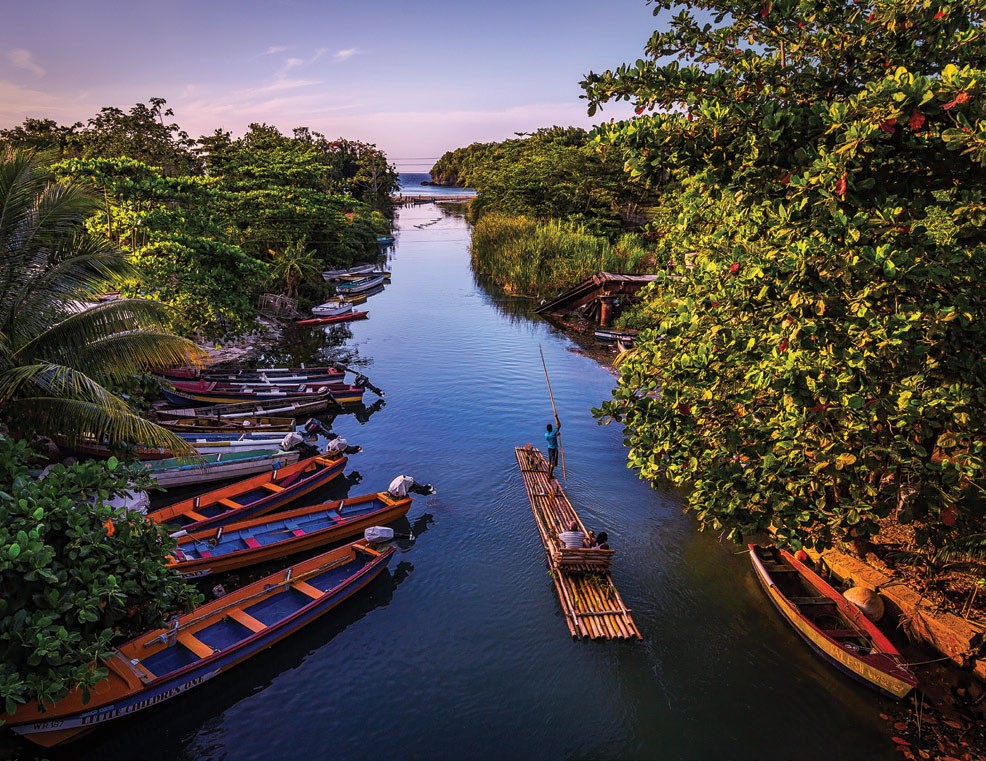 Jamaican Coastline
Jamaican Coastline
Alt text: A vibrant coastal view of Jamaica featuring crystal-clear waters, sandy beaches, and lush greenery, reflecting the island’s natural beauty and its significant reliance on tourism.
2.5. Belize: A Caribbean Gem
Population: 441,000
GDP: $3 billion
Area: 22,966 km²
Tourism accounts for 20.3% of Belize’s GDP. In 2022, 371,000 visitors spent $600 million, averaging $1,620 per visitor. Located on the Caribbean coast, south of Mexico, Belize’s high share of tourism in its economy is due to the small size of its economy and the underdevelopment of other sectors. The coast, ancient Mayan temples, and the famous Blue Hole are major attractions. The average temperature in Belize ranges between 24 and 28 degrees Celsius throughout the year.
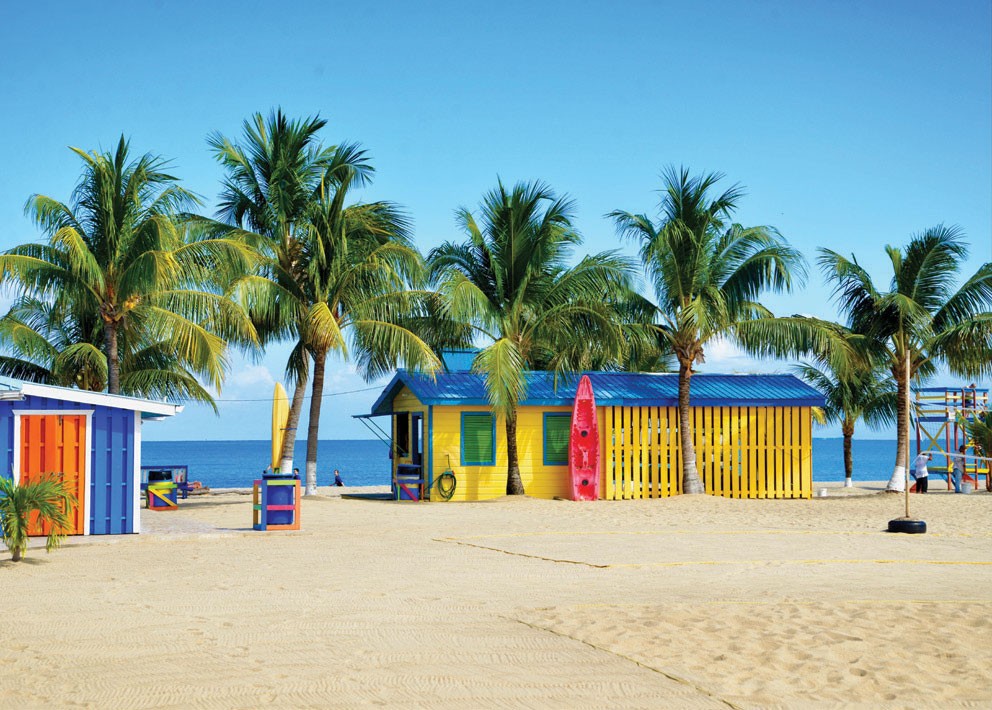 Belize Blue Hole Aerial View
Belize Blue Hole Aerial View
Alt text: An aerial shot of the Great Blue Hole in Belize, surrounded by turquoise waters and coral reefs, symbolizing the country’s natural attractions and dependence on tourism.
2.6. Croatia: Mediterranean Delight
Population: 3.9 million
GDP: $71 billion
Area: 56,594 km²
Croatia’s tourism sector contributed 18.9% to its GDP in 2022. The country welcomed 15.3 million visitors, who spent $13.5 billion, with an average spend per visitor of $900. Located on the shores of the Mediterranean Sea, Croatia has an 1,800 km coastline along the Adriatic. Tourists are drawn to the coast, historical monuments, and architecture. The Old Town of Dubrovnik, a UNESCO World Heritage Site, is a particularly popular destination, further boosted by its appearance in the TV series “Game of Thrones.”
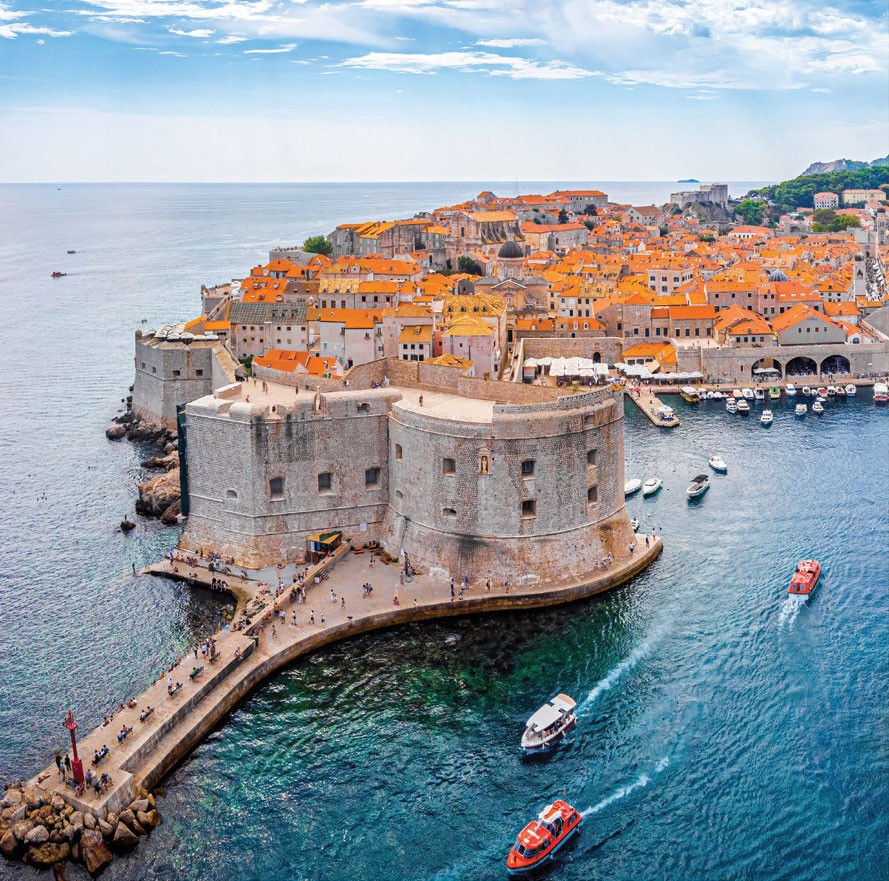 Dubrovnik Old Town, Croatia
Dubrovnik Old Town, Croatia
Alt text: A panoramic view of Dubrovnik’s Old Town in Croatia, showcasing its historic architecture and coastal setting, highlighting the city’s importance as a major tourist destination and its contribution to the country’s economy.
2.7. Montenegro: Balkan Beauty
Population: 602,000
GDP: $6.1 billion
Area: 13,812 km²
Tourism contributes 18.2% to Montenegro’s GDP. In 2022, two million people visited, spending $1.1 billion, with an average spend of $550 per visitor. Located in the north of the Balkan Peninsula, on the coast of the Adriatic Sea, Montenegro attracts tourists with its coast, mountain slopes, historical monuments, and architecture. Popular destinations include the 15th-century settlement Sveti Stefan.
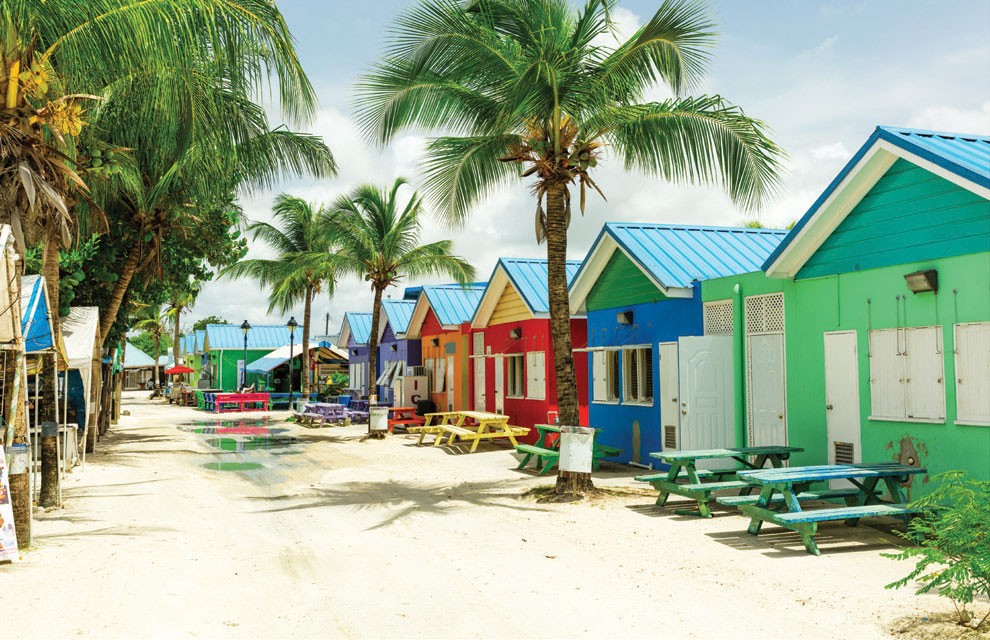 Sveti Stefan, Montenegro
Sveti Stefan, Montenegro
Alt text: A scenic view of Sveti Stefan in Montenegro, a historic islet connected to the mainland, illustrating the country’s unique coastal attractions and its draw for tourism.
2.8. Barbados: A Caribbean Gem
Population: 268,000
GDP: $5.7 billion
Area: 439 km²
In 2022, revenue from foreign visitors equaled 16.2% of Barbados’s GDP. 443,000 people traveled to Barbados last year, spending $929 million. The average spend per visitor was $2,100.
Barbados is a Caribbean Island located north of Venezuela. The average annual income per capita is $18,000 (PPP), making it a low-income country. Barbados achieved independence from the UK in 1958. The official state language is English. The country does not attract many visitors between June and December when it frequently rains. However, the January-May dry season is ideal for seaside tourism. With its white sand and green sea, Barbados is considered the best holiday destination in the Caribbean.
2.9. Albania: Balkan Discovery
Population: 2.8 million
GDP: $18.5 billion
Area: 28,748 km²
Tourism contributes 16.2% to Albania’s GDP. In 2022, 6.7 million people visited, spending $3 billion, with an average spend of $440 per visitor. Located west of the Balkan Peninsula, on the coast of the Adriatic Sea, Albania attracts tourists with its beaches, historical and archaeological monuments, and medical tourism. Three cities in Albania are UNESCO World Heritage Sites: Butrint, Gjirokastër, and Berat. According to the Albanian Ministry of Tourism, the country is focusing on sustainable tourism to preserve its cultural and natural heritage.
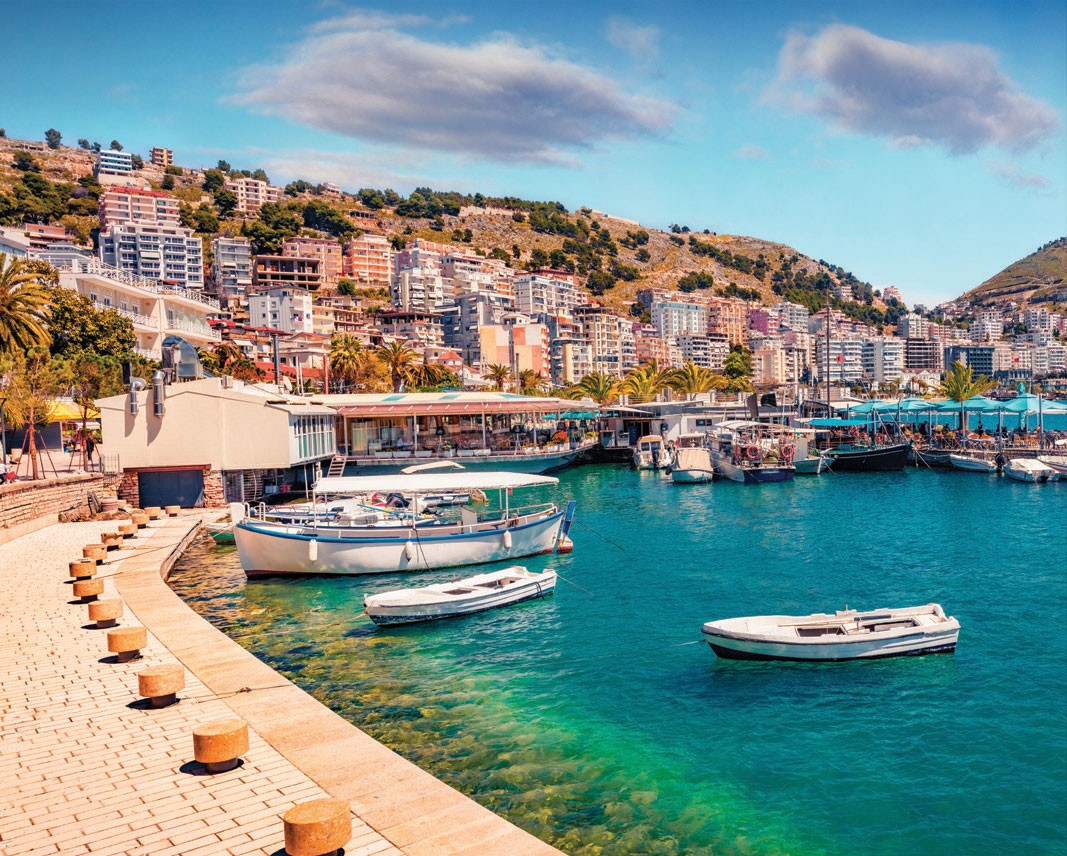 Berat, Albania
Berat, Albania
Alt text: A picturesque view of Berat, Albania, featuring its unique Ottoman-era architecture with numerous windows, reflecting the city’s historical significance and its attraction for cultural tourism.
2.10. Fiji: Island Paradise
Population: 926,000
GDP: $4.8 billion
Area: 18,274 km²
Tourism contributes 14.33% to Fiji’s GDP. In 2022, 636,000 people traveled to Fiji, spending $700 million, with an average spend of $1,100 per visitor. This small island country in the southwest Pacific Ocean consists of 330 islands. Tourists are attracted by the fantastic beaches with white sand, palm trees, and clear water, as well as the country’s tropical forests and villages. Fiji has a tropical climate, with an average temperature of 22 degrees Celsius, even during the coldest period.
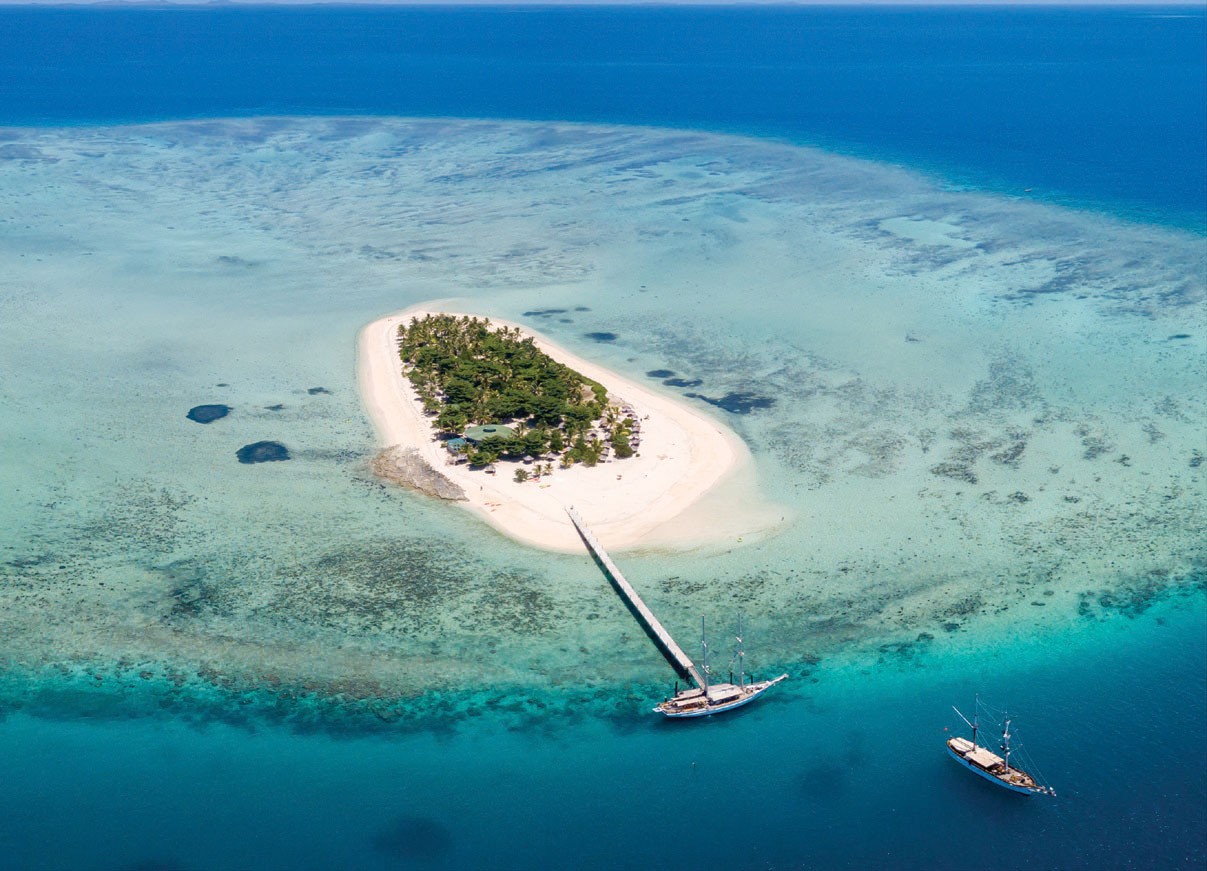 Fijian Beach Scene
Fijian Beach Scene
Alt text: A tranquil beach scene in Fiji, with clear blue waters, white sandy beaches, and lush palm trees, exemplifying the island’s idyllic setting and its strong dependence on tourism for economic sustainability.
3. Vietnam: An Emerging Tourist Destination
While Vietnam may not top the list of countries most dependent on tourism, it’s rapidly growing as a popular destination. Vietnam offers a rich blend of cultural heritage, stunning landscapes, and vibrant city life.
3.1. Key Attractions in Vietnam
- Hanoi: The capital city, known for its historical sites, bustling Old Quarter, and delicious street food.
- Ha Long Bay: A UNESCO World Heritage site with thousands of limestone karsts and isles rising from emerald waters.
- Hoi An: An ancient trading port with well-preserved architecture and tailor shops.
- Ho Chi Minh City: A dynamic metropolis with modern skyscrapers and historical landmarks.
- Sapa: A mountainous region with rice terraces and ethnic minority villages.
- Mekong Delta: A fertile region with floating markets and lush landscapes.
- Da Nang: A coastal city known for its beautiful beaches and the iconic Dragon Bridge.
3.2. Tourism Statistics for Vietnam
According to the Vietnam National Administration of Tourism, Vietnam has seen a significant increase in international arrivals in recent years, with a target to welcome millions of visitors. The tourism sector is a vital contributor to Vietnam’s economy, generating revenue and creating employment opportunities.
3.3. How SIXT.VN Enhances Your Vietnam Experience
SIXT.VN offers a range of services to ensure a smooth and enjoyable trip to Vietnam.
- Airport Transfers: Reliable and comfortable airport transfer services to start your journey hassle-free.
- Hotel Bookings: Assistance in finding the perfect accommodation to suit your budget and preferences.
- Sightseeing Tours: Expertly guided tours to explore Hanoi and its surrounding areas.
- Flight Bookings: Support in securing the best flight deals for your trip.
- Customized Itineraries: Tailored travel plans to match your interests and schedule.
4. The Impact of COVID-19 on Tourism-Dependent Countries
The COVID-19 pandemic had a devastating impact on tourism-dependent countries. Travel restrictions, lockdowns, and fear of infection led to a drastic decline in international arrivals, causing significant economic hardship.
4.1. Economic Consequences
- Loss of Revenue: Countries heavily reliant on tourism experienced a sharp drop in revenue, leading to budget deficits and economic instability.
- Job Losses: Millions of people working in the tourism sector lost their jobs, exacerbating unemployment rates.
- Business Closures: Many hotels, restaurants, and tour operators were forced to close down due to lack of business.
- Reduced Investment: Investment in tourism infrastructure and development projects was put on hold.
4.2. Recovery Strategies
Many countries have implemented strategies to revive their tourism sectors post-pandemic.
- Vaccination Campaigns: Prioritizing vaccination of tourism workers and promoting destinations as safe for travel.
- Safety Protocols: Implementing strict health and safety protocols to ensure the well-being of tourists.
- Domestic Tourism: Encouraging local travel to offset the decline in international arrivals.
- Marketing and Promotion: Launching marketing campaigns to promote destinations and attract tourists.
- Diversification: Exploring alternative sources of revenue to reduce reliance on tourism.
5. Sustainable Tourism: A Path Forward
Sustainable tourism aims to minimize the negative impacts of tourism while maximizing its benefits for local communities and the environment. It involves responsible travel practices that conserve natural resources, respect local cultures, and promote economic development.
5.1. Principles of Sustainable Tourism
- Environmental Protection: Minimizing pollution, conserving biodiversity, and promoting eco-friendly practices.
- Cultural Preservation: Respecting local customs, traditions, and heritage.
- Economic Benefits: Ensuring that tourism revenues benefit local communities through job creation and support for local businesses.
- Community Involvement: Engaging local communities in tourism planning and decision-making.
- Education and Awareness: Raising awareness among tourists and locals about the importance of sustainable tourism practices.
5.2. Examples of Sustainable Tourism Initiatives
- Eco-Lodges: Accommodations that minimize environmental impact and support local communities.
- Community-Based Tourism: Tours and activities that are owned and operated by local communities.
- Conservation Projects: Initiatives that protect natural resources and biodiversity.
- Responsible Tour Operators: Companies that adhere to sustainable tourism principles and promote responsible travel practices.
6. Planning Your Trip to Vietnam with SIXT.VN
Ready to explore Vietnam? SIXT.VN is here to help you plan an unforgettable trip with ease and convenience.
6.1. Step-by-Step Guide to Booking Services on SIXT.VN
- Visit the SIXT.VN Website: Go to SIXT.VN to explore the range of services.
- Select Your Desired Service: Choose from airport transfers, hotel bookings, sightseeing tours, flight bookings, or customized itineraries.
- Enter Your Details: Provide your travel dates, destination, and any specific requirements.
- Compare Options: Review the available options and compare prices and features.
- Make Your Booking: Confirm your selection and make a secure payment.
- Receive Confirmation: Get instant confirmation of your booking via email.
6.2. Tips for a Smooth Travel Experience in Vietnam
- Visa Requirements: Check visa requirements and ensure you have the necessary documents.
- Currency: Familiarize yourself with the local currency (Vietnamese Dong) and exchange rates.
- Transportation: Plan your transportation in advance, whether it’s airport transfers, taxis, or local buses.
- Accommodation: Book your accommodation in advance, especially during peak season.
- Health and Safety: Consult your doctor about necessary vaccinations and health precautions.
- Cultural Etiquette: Respect local customs and traditions.
- Language: Learn a few basic Vietnamese phrases to enhance your interactions with locals.
6.3. Contact SIXT.VN for Personalized Assistance
Need help planning your trip? Contact SIXT.VN for personalized assistance.
- Address: 260 Cau Giay, Hanoi, Vietnam
- Hotline/WhatsApp: +84 986 244 358
- Website: SIXT.VN
7. Emerging Trends in Tourism
The tourism industry is constantly evolving, with new trends shaping the way people travel and experience destinations.
7.1. Experiential Travel
Experiential travel focuses on immersive and authentic experiences that allow travelers to connect with local cultures, engage in unique activities, and create lasting memories. This trend emphasizes quality over quantity, with travelers seeking meaningful and transformative experiences.
7.2. Sustainable and Eco-Friendly Travel
With growing awareness of environmental issues, sustainable and eco-friendly travel options are becoming increasingly popular. Travelers are seeking accommodations, tours, and transportation options that minimize their impact on the environment and support local communities.
7.3. Wellness Tourism
Wellness tourism involves travel for the purpose of promoting health and well-being. This trend includes activities such as spa treatments, yoga retreats, meditation sessions, and healthy eating programs.
7.4. Adventure Tourism
Adventure tourism caters to thrill-seekers and outdoor enthusiasts, offering activities such as hiking, mountain biking, rock climbing, and water sports. Destinations with diverse landscapes and natural attractions are particularly popular for adventure tourism.
7.5. Digital Nomadism
Digital nomadism involves working remotely while traveling to different locations. This trend is facilitated by advances in technology and the increasing availability of remote work opportunities.
8. FAQs About Tourism Dependence
Which country depends most on tourism? Here are some frequently asked questions to provide more clarity.
8.1. What does it mean for a country to be heavily dependent on tourism?
It means that a significant portion of the country’s GDP comes from tourism-related activities, such as accommodation, transportation, and attractions.
8.2. Which regions are most likely to have tourism-dependent countries?
Small island nations and regions with attractive natural resources, such as beaches, mountains, and forests, are most likely to have tourism-dependent countries.
8.3. How does tourism dependence affect a country’s economy?
Tourism dependence can boost economic growth by creating jobs, generating revenue, and driving investment in infrastructure. However, it can also make a country vulnerable to economic shocks, such as recessions and pandemics.
8.4. What are the risks of relying too much on tourism?
The risks include economic instability, environmental degradation, socio-cultural disruption, and seasonal fluctuations in demand.
8.5. How can countries diversify their economies to reduce tourism dependence?
Countries can invest in other sectors, such as manufacturing, agriculture, technology, and services, to create a more balanced and resilient economy.
8.6. What is sustainable tourism, and why is it important?
Sustainable tourism aims to minimize the negative impacts of tourism while maximizing its benefits for local communities and the environment. It is important for ensuring the long-term viability of tourism destinations.
8.7. How can travelers contribute to sustainable tourism?
Travelers can choose eco-friendly accommodations, support local businesses, respect local cultures, and minimize their environmental impact.
8.8. What role does technology play in the tourism industry?
Technology plays a crucial role in the tourism industry by facilitating online bookings, providing information, enhancing communication, and improving customer service.
8.9. What are some emerging trends in the tourism industry?
Emerging trends include experiential travel, sustainable and eco-friendly travel, wellness tourism, adventure tourism, and digital nomadism.
8.10. How can SIXT.VN help me plan my trip to Vietnam?
SIXT.VN offers a range of services, including airport transfers, hotel bookings, sightseeing tours, flight bookings, and customized itineraries, to ensure a smooth and enjoyable trip to Vietnam.
9. Conclusion: Embracing Responsible Tourism for a Sustainable Future
Which country depends most on tourism? The Maldives, Antigua and Barbuda, and Seychelles are just a few examples of nations where tourism is a vital economic lifeline. While tourism offers significant benefits, it is essential to embrace responsible and sustainable practices to minimize its negative impacts and ensure the long-term viability of tourism destinations. Whether you’re planning a luxurious getaway or an adventurous exploration, SIXT.VN is here to help you create unforgettable memories in Vietnam. Discover the beauty and charm of this vibrant country while contributing to its sustainable development. Book your Vietnam adventure today and experience the best that this amazing destination has to offer! Let SIXT.VN be your trusted companion on this exciting journey.
Ready to explore Vietnam? Contact SIXT.VN today and let us help you plan the perfect trip! Visit our website or call our hotline to learn more about our services and special offers. Your adventure awaits!



